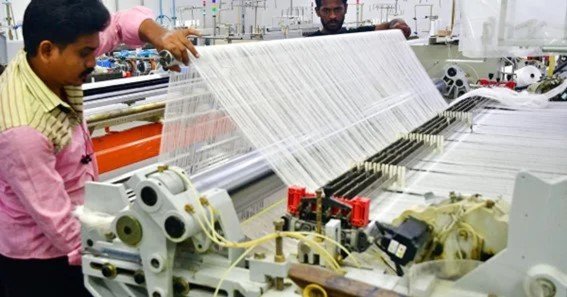The saree, a timeless symbol of India’s rich cultural heritage, remains an integral part of the country’s textile industry. Despite the growing popularity of Western attire, the saree industry in India continues to thrive, driven by both tradition and modern innovation. This blog explores the key players, market dynamics, growth trends, and challenges facing the saree industry in India.
Market Overview
The saree industry in India is vast and diverse, with each region offering its unique styles, fabrics, and weaving techniques. From the Kanjeevaram sarees of Tamil Nadu to the Banarasi sarees of Uttar Pradesh, the market caters to a wide array of preferences and cultural significance. The industry is a significant contributor to India’s textile sector, which is the second-largest employer after agriculture.
Key Players in the Saree Industry
1. Nalli Silks
- Overview: Established in 1928, Nalli Silks is a household name in the saree industry. Known for its high-quality silk sarees, Nalli has expanded its presence across India and abroad.
- Market Position: Nalli Silks is synonymous with traditional sarees and has maintained a loyal customer base over decades, leveraging its reputation for quality and authenticity.
2. BharatSthali
- Overview: BharatSthali specializes in handloom sarees sourced directly from weavers across India. The brand focuses on promoting traditional weaves while ensuring fair trade practices.
- Market Position: BharatSthali is well-regarded for its commitment to preserving traditional craftsmanship and supporting artisans.
3. Ritu Kumar
- Overview: Ritu Kumar is a leading fashion designer known for her fusion of traditional and contemporary designs. Her saree collections often feature rich fabrics and intricate embroidery.
- Market Position: Ritu Kumar has carved a niche in the premium segment, appealing to urban consumers looking for designer sarees with a touch of tradition.
4. Manyavar
- Overview: Originally known for its wedding wear, Manyavar has expanded into the saree market with its sub-brand Mohey. The brand offers a range of sarees catering to festive and bridal wear.
- Market Position: Manyavar-Mohey has quickly gained popularity for its stylish and affordable sarees, targeting young brides and festive shoppers.
5. FabIndia
- Overview: FabIndia is a well-known brand that offers a wide range of ethnic wear, including sarees. The brand emphasizes natural fabrics and traditional Indian crafts.
- Market Position: FabIndia appeals to environmentally conscious consumers looking for sustainable and handcrafted sarees.
Market Dynamics
1. Consumer Preferences
- Traditional vs. Contemporary: While traditional sarees remain popular for cultural events and weddings, there is a growing demand for contemporary designs that blend traditional elements with modern aesthetics.
- Sustainability: With increasing awareness of sustainable fashion, consumers are gravitating towards handloom and organic sarees, driving demand for ethically produced garments.
2. E-commerce Expansion
- The rise of e-commerce has significantly transformed the saree industry. Online platforms like Amazon, Myntra, and specialized saree websites have made sarees more accessible, especially to younger consumers and NRIs.
- Digital marketing and social media have also played crucial roles in promoting sarees, with influencers showcasing various styles and drapes, thereby boosting sales.
3. Regional Variations
- The saree industry is deeply regionalized, with different states known for specific types of sarees. For example, West Bengal is famous for its Baluchari and Tant sarees, while Maharashtra is known for Paithani sarees. This regional diversity allows for a wide variety of options in the market.
- Festivals and cultural events often drive demand for specific regional sarees, influencing production cycles and market trends.
4. Innovation and Adaptation
- Blended Fabrics: To cater to modern consumers, manufacturers are experimenting with blended fabrics that offer the elegance of traditional sarees but with added comfort and easier maintenance.
- Designer Collaborations: Collaborations between saree brands and fashion designers have led to innovative collections that appeal to younger generations, helping to keep the saree relevant in contemporary fashion.
Challenges Facing the Saree Industry
1. Competition from Western Wear
- The increasing preference for Western clothing, especially among younger generations, poses a significant challenge to the saree industry. Sarees are often viewed as less practical for everyday wear, leading to a decline in daily usage.
2. Supply Chain Issues
- The saree industry, particularly the handloom segment, faces challenges related to supply chain inefficiencies. Artisans often struggle with inconsistent demand, fluctuating raw material prices, and inadequate access to modern technology.
- Additionally, the unorganized nature of the handloom sector makes it difficult for small weavers to compete with larger, mechanized manufacturers.
3. Global Competition
- Indian saree manufacturers face competition from countries like Bangladesh, which offers similar products at competitive prices. This has pressured Indian weavers and manufacturers to innovate and differentiate their products.
Conclusion
The saree industry in India is a dynamic and evolving sector that continues to balance tradition with modernity. While it faces several challenges, the industry’s adaptability, combined with a renewed interest in sustainable and handcrafted products, suggests a positive outlook. Key players in the market are leveraging their strengths in tradition, quality, and innovation to remain competitive, ensuring that the saree remains an enduring symbol of India’s rich cultural heritage.
This detailed blog offers a comprehensive overview of the saree industry in India, discussing its key players, market dynamics, and the challenges it faces in today’s evolving fashion landscape. The content is designed to inform and engage readers who are interested in the intersection of tradition and modernity in Indian textiles.
Disclaimer: This article is for informational purposes only and should not be taken as financial advice. Always consult a financial advisor for investment decisions.
Related articles:
The Journey of Saraswati Saree Depot: From a Family Business to a Public Company
Saraswati Saree Depot vs. Competitors: Comparative Analysis of Recent IPOs
Saraswati Saree Depot’s IPO: A Detailed Look at Subscription Figures
Saraswati Saree Depot’s IPO Delivers: A Stunning 27% Gain on Day One










